Fenestration Innovations for Leaner, Greener Times
A Raft of Glass Innovations
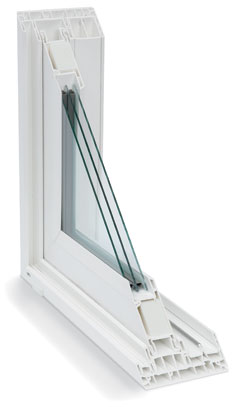 |
Next-generation vinyl windows provide advances in thermal control such as triple-pane glazing and more insulating air chambers. Photo courtesy of K. Easley, courtesy of Pella Commercial |
Better ratings and test values are an important trend but they are not the only reason that fenestration products are improving. “In five to 10 years, buildings are going to be very different than they are today because of the energy requirements we face,” says Barry B. Corden, senior director of product applications for Guardian Industries. “So all kinds of technological transformations will really change the game, including building-integrated photovoltaics, or BIPV, as well as electrochromic glazing.”
Several of the newer technologies add renewable and self-sustaining energy production to building designs, says Corden, an outgrowth of the net-zero-energy building movement. Net-zero-energy designs, which dramatically reduce the carbon footprint of the structure, use methods to maximize efficiency while also using onsite electrical generation or water reuse, or both, according to the National Renewable Energy Laboratory (NREL), Golden, Colo. In the new green building codes, the use of renewable energy is encouraged and rewarded.
In the past, solar cells blocked daylight transmission—which reduced solar gain but also increased the use of electrical lighting, all things equal. Next-generation photovoltaic glass materials have been designed for greater transparency, increasing direct and indirect daylighting—which trims electrical lighting needs—and enhancing visibility through the envelope while also more efficiently generating electricity. Where solar cells were previously limited to only rooftop arrays, now the PV glass panels can be integrated into curtain wall, windows, spandrel panels, skylights and roof windows, says Corden. The maximum panel size today is about 5 feet by 5 feet.
While BIPV is a game-changing technology, other incremental advances are just as significant, notes Pella's Zeimetz. Next-generation vinyl windows, for example, are potentially very high-performing fenestration systems today in spite of their longtime association as a cost-conscious alternative spec.
 |
The University of Michigan C.S. Mott Children’s Hospital and Von Voigtlander Women’s Hospital was designed by the firm HKS to use low-E glazing with low reflectivity and a neutral appearance. Photo courtesy of Guardian Industries |
The main reason? Advances in thermal control, say fenestration experts. Thanks in part to the use of triple-pane glazing, vinyl windows have been shown in recent studies to be up to 83% more energy efficient than past models (calculated based on U-factors for a next-generation vinyl window with advanced low-E triple-pane insulating glass with argon compared to a single-pane vinyl window in winter conditions). “State-of the-art product designs have up to 18 insulating air chambers within the vinyl window frames—that's three times more than typical vinyl windows,” says Pella's Zeimetz. The result is a total window unit U-factor of as low as 0.15, which compares to the 2012 IECC maximum U-factors for vertical fenestration of 0.29 and 0.37, respectively, for fixed and operable units, in the most stringent climate zones.
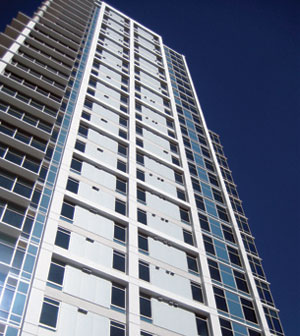 |
The Sapphire Towers in San Diego have glazed openings with a minimum 45-minute fire rating. Photo courtesy of SAFTIFIRST |
In addition, new vinyl and aluminum windows can be specified with optional foam insulation to further improve the energy performance. To improve control of solar gain and daylight glare, new window designs can include shades or blinds between the glass panes. This feature generally reduces solar heat gain while also protecting the solar control layer from degradation, wear and tear, and mishandling by occupants. Most importantly, it brings the solar protection layer closer to the building exterior, which improves thermal control and occupant comfort.
In fact, the position and location of the active fenestration layers, such as the low-emissivity (low-E) glass coating, can significantly improve enclosure performance, says Guardian's Dolan. “A new low-E glass coating designed for interior glass surfaces is designed to reflect heat back into the building, which further reduces the U-factor,” he explains. “So for a typical double-glazed unit, an architect can achieve a center-of-glass U-factor of 0.20, which is an R-factor equivalent of R-5.”
The secret to the innovation is a highly resilient interior-surface low-E coating that is not composed of a silver-based compound. The durable, scratch-resistant surface will not corrode like typical low-E coatings, so it can face the building interior surface rather than the insulating glass unit (IGU), which has been typical.
Another type of glazing innovation, electrochromic glass, also helps to control SHGC, VLT and U-factor. “Electrochromic glazing technology can be switched on demand from clear to variable-tint states, giving occupants and owners unprecedented control over the amount of light and heat that enters a building,” says Guardian's Corden. “This switchable tinting capability delivers environmental benefits, improved occupant comfort and potential operating cost reductions.” The product also allows architects to eliminate blinds, shades and other window treatments that may reduce outdoor views, he adds.
Assemblies Advance
In addition to better glass formulations, a number of improvements motivated by stringent codes and industry technical advances have been applied to storefront and curtain wall. Some unitized curtain wall systems now offer novel, integral vent windows, for example, to allow for more fresh air circulation to improve IEQ. A novel unitized aluminum curtain wall, for example, takes advantage of a proprietary, high-strength fiberglass composite technology developed originally to resist thermal expansion and contraction.
Used as struts in the unitized curtain wall, the five-layer composite helps achieve excellent U-factors, says EFCO's Sutton. It can also be employed for the pressure plate, providing thermal conductance values approximately 300 times better than those for aluminum plates. The composite has also been shown to improve thermal conductance and overall frame and glass U-factor gains of about 27 percent versus standard aluminum pressure plates. The material swap can also reduce installation steps, because it eliminates the need for a thermal isolator between the back member and pressure plate.
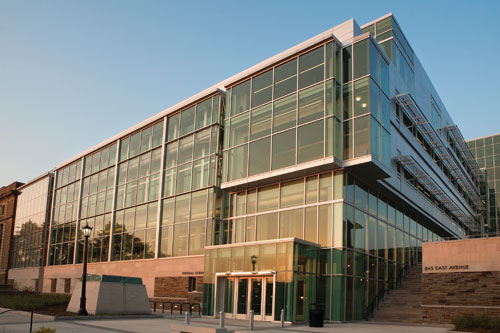 |
At the Cornell Physical Science Building in Ithaca, N.Y., novel thermal breaks, some using composite materials, provide lower overall rates of heat transfer and better U-factors. Photo courtesy of EFCO, a Pella Company |
Introducing greater levels of fresh, outdoor air into occupied interior zones is known to improve occupant health and productivity. To improve indoor environmental quality (IEQ) through the fenestration choice and design, architects may select a high-performance architectural-grade vent, also known as an AW-rated vent, that is integral to the curtain wall system.
Another novel fenestration product is an aluminum-clad wood window wall with a wood or steel structure for structural attachments. The system design provides structural, technical and water-management capabilities while offering a wood interior and an aluminum exterior. In some cases, the aluminum-clad wood products are tied to the building structure using steel tubes or similar metal connections.
Beyond structural integrity of the fenestration systems, predictable performance under heat, flame and smoke during fire emergencies is important for code officials in order to allow the use of glass for fire-rated fenestration, exterior walls and interior partitions. That need—in addition to the desire to maximize exterior views and daylighting within the building for further improvements to IEQ—has led to the increased use of fire-protective and fire-resistive glass.
According to SAFTIFIRST's San Diego, these glazing materials must meet the standards published by West Conshohocken, Pa.-based ASTM International, the Quincy, Mass.-based National Fire Protection Association (NFPA), and UL, formerly Underwriters Laboratories. “Fire-protective glass meets NFPA 252/257, protects against smoke and flames, and is typically used in 20- to 45-minute applications. Fire-protective glass is limited to 25 percent of the wall area because it is unable to block dangerous radiant heat,” she explains. “Fire-resistive glass, on the other hand, meets ASTM E-119/NFPA 251/UL263 and protects against smoke, flames and dangerous radiant heat. It is typically used in applications of greater than 45 minutes and has none of the size limitations that apply to fire-protective glass.”
In other words, the fire-rated glazing products can be used in stairwells, exit corridors, rated walls between dissimilar occupancies, and other fire-separated areas in a building. “On the building's exterior, fire-rated glass can be used whenever property line requirements need to be addressed, or if the area is in close proximity to a parking garage,” says San Diego. The latest fire-rated fenestration assemblies are available for hurricane zones, ballistic applications, and even energy-efficient applications. Some fire-rated glass systems have glass and framing assemblies certified by the Greenbelt, Md.-based National Fenestration Rating Council (NFRC) as a response to the increased demand in energy-efficient building enclosures.
This fact ties back to the original premise of many innovative fenestration products: to meet and exceed multiple energy code regimes and green-building standards while still providing occupant safety, security, sound control and privacy.
Notice
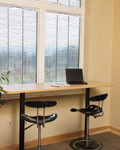
www.sunguardglass.com
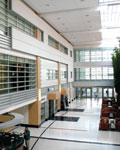
www.safti.com
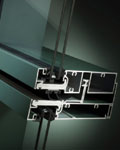
www.efcocorp.com









